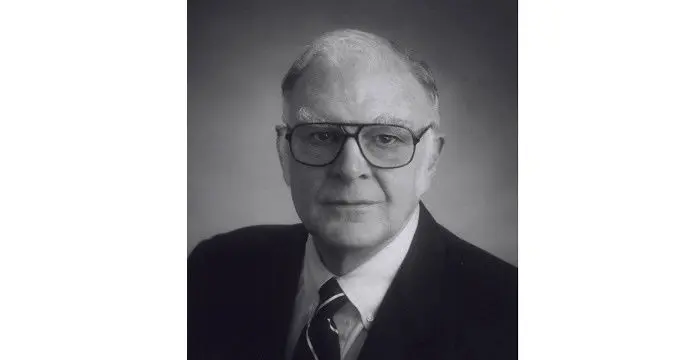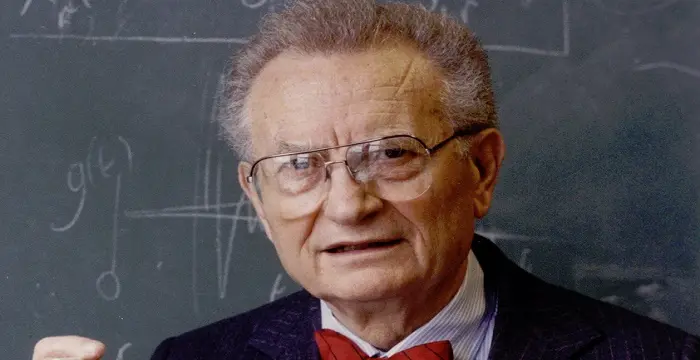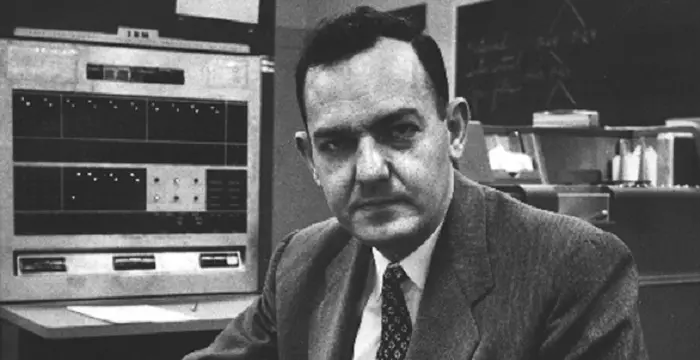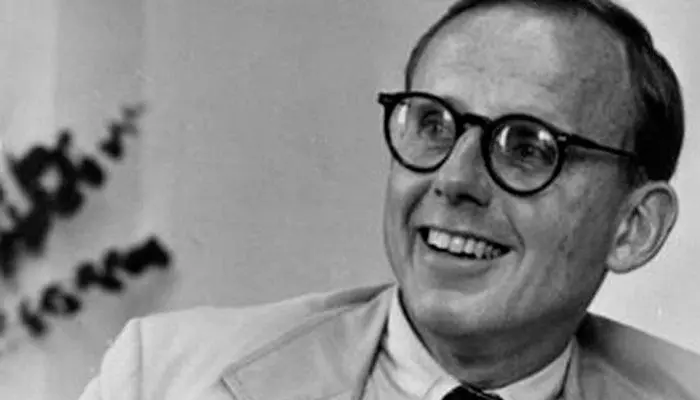
Frank Sherwood Rowland - Atmospheric Chemist, Timeline and Family
Frank Sherwood Rowland's Personal Details
Frank Sherwood Rowland was an American chemist who won the 1995 Nobel Prize in Chemistry
| Information | Detail |
|---|---|
| Birthday | June 28, 1927 |
| Died on | March 10, 2012 |
| Nationality | American |
| Famous | University Of Chicago, Scientists, Chemists, Atmospheric Chemist |
| Siblings | Richard C. Tolman |
| Universities |
|
| Notable Alumnis |
|
| Birth Place | Delaware, Ohio, United States |
| Gender | Male |
| Sun Sign | Cancer |
| Born in | Delaware, Ohio, United States |
| Famous as | Atmospheric Chemist |
| Died at Age | 84 |
// Famous Atmospheric Chemist
Paul J. Crutzen
Paul Jozef Crutzen is a Dutch atmospheric chemist, well-known for his work on ozone depletion and global warming. Check out this biography to know about his childhood, life, achievements, works & timeline.
Frank Sherwood Rowland's photo
Who is Frank Sherwood Rowland?
Frank Sherwood Rowland, lovingly called Sherry by his colleagues, was an American chemist and Nobel laureate, who researched in the field of atmospheric chemistry and chemical kinetics. Born in late 1920s in Delaware, he had his education, first at Ohio Wesleyan University and then at the University of Chicago. Thereafter, he began his career at Princeton University as Instructor of Chemistry, shifting from there to the University of Kansas and then to the University of California, where he remained for the rest of his life. It was here at California that he undertook his Nobel Prize winning work on chlorofluorocarbons, which was then being regularly used in air conditioners, refrigerators, and aerosol sprays. Working with Mario Molina, he established that such use had dangerous consequence on the stratospheric ozone layer, making holes in it. Not satisfied with merely establishing the fact, he raised his voice against regular use of CFC and became instrumental to banning it first in the USA and later all over the world. The 1987 Montreal protocol was actually the result of his tireless crusade against the use of chlorofluorocarbons.
// Famous Scientists
Juliane Koepcke
Juliane Koepcke is a German-Peruvian biologist, who was the lone survivor among the 92 passengers and crew of the ill-fated LANSA Flight 508 that crashed in the Peruvian rainforest on 24 December 1971. Know more about her life in this biography.
Henry Cavendish
Henry Cavendish was a theoretical chemist and physicist, renowned for discovery of hydrogen and calculation of the mass of earth. To know more about his childhood, profile, timeline and career read on
Konstantin Tsiolkovsky
Konstantin Tsiolkovsky was a Russian rocket scientist and a pioneer of astronautics. This biography provides detailed information about his childhood, family, personal life, career, achievements, etc.
Childhood & Early Life
Frank Sherwood Rowland was born on June 28, 1927, in Delaware, Ohio. His father, Sydney A. Rowland, was a Professor of Mathematics and the Chairman of the Department at the Ohio Wesleyan University. His mother, Margaret Drake Rowland, taught Latin. He was the second of his parents’ three children.
Frank began his schooling at the age of five at a local public school. He was a brilliant boy and as accelerated promotion was allowed in Delaware school system, he skipped the fourth grade and entered the high school at the age of twelve.
During his high school years, he spent the summer vacations acting as the weatherman at the local voluntary weather station, keeping records of maximum and minimum temperature as well as the total precipitation. It was his first exposure to weather phenomenon and systematic data collection.
In 1943, just few weeks before his sixteenth birthday, Frank Sherwood Rowland graduated from school and entered Ohio Wesleyan University. Because he was not yet eighteen, he could not be enlisted for the military service and so he was few of the male students left in the university.
In 1945, he turned eighteen and joined the US Navy to get trained as a radar operator. The World War II ended in the same year while he was still a trainee. However, he had to wait for fourteen months before he was released from the Navy.
Thereafter, he hitched back to Ohio across a distance of 2000 miles from San Pedro, California, where he was transferred before release. He then spent two more years, completing his undergraduate studies, majoring in physics, chemistry and mathematics.
In 1948, Rowland graduated from Ohio Wesleyan University with a Bachelor of Arts degree. In fall, he joined the University of Chicago to study chemistry. Here he was included in the research group of Willard F. Libby, known for inventing the Carbon-14 Dating technique.
Professor Libby had a great influence on his young mind. Under his guidance, Rowland earned his M.S degree in 1951 and PhD in August 1952. His dissertation was titled ‘The epithermal reactions of recoil atoms’.
Career
In September 1952, within a month of earning his PhD degree, Rowland joined University of Princeton as an Instructor in the Department of Chemistry. Concurrently, he spent the summers of 1953, 1954 and 1955 working at the Chemistry Department of the Brookhaven National Laboratory.
While working at Brookhaven, he put powdered mixture of the sugar glucose and lithium carbonate into the neutron flux of the nuclear reactor. It resulted in one-step synthesis of radioactive tritium-labeled glucose. This work was noted by the United States Atomic Energy Commission (AEC) and it offered support for continuation of the research.
However, before anything could materialize, he received appointment as an Assistant Professor at the University of Kansas and joined his new post in the summer of 1956. The support promised by AEC also arrived on time.
He therefore, lost no time in gathering a research team, comprising of graduate student and postdoctoral fellows. For next eight years, he worked with this research group, investigating mainly the chemical reactions of energetic tritium atoms.
In August 1964, he moved to Irvin to become Professor of Chemistry and also the first Chairman of the Chemistry Department of the yet-to-be opened University of California. In spite of the transfer, he continued receiving the support from AEC.
Students began to arrive by September 1965. Here too he gathered an effective research team and continued his work on ‘hot atom’ chemistry. At the same time, he deliberately sought new topics, trying to instill some freshness in the research work.
Thus they first worked on radioactive tracer photochemistry, using tritium and carbon-14; then chlorine and fluorine chemistry using the radioactive isotopes 38Cl and 18F. In 1970, he gave up the post of Chairman of the Chemistry Department to concentrate more on actual research.
By this time, the state of environment became a cause of general concern and his daughter Ingrid, was especially involved in this matter. In 1970, he travelled to Salzburg, Austria to attend an International Atomic Energy Agency meeting on the environmental applications of radioactivity and had many close interaction with specialists in the field.
in January 1972, he attended another such meeting held in Fort Lauderdale, Florida. It was here that Rowland first learnt about the traces of chlorofluorocarbon (a man-made chemical) found in the atmosphere both at northern and southern hemisphere.
Initially, it was believed to be an advantage as the inertness of the gas would stop its early removal and so it could act as an excellent tracer for air movement. However, as a chemical kineticist and photochemist, Rowland knew that the solar photochemistry is going to break it down one day.
He then began to wonder what would finally happen to the chlorofluorocarbon (CFC) compounds in the atmosphere. In 1973, funded by Atomic Energy Commission, he and Mario Molina, a postdoctoral research scholar in his team, started working on that.
Within three months, Rowland and Molina realized that they are working on something that had grave consequences for the environment. They found that the CFC results in substantial depletion of the stratospheric ozone layer. In 1974, they published the result of their work in the June volume of the journal Nature.
However, the scientific community failed to take note of the danger and the paper was met with indifference. So in September 1974, they held a press conference, calling for a total ban on further release of CFCs in the atmosphere
This too failed to move the scientific community. However, Rowland remained calm and worked tirelessly to bring in legislation that would ban release of CFC in the atmosphere. At the same time, he tried to make scientific community as well as the general public aware of the danger they are facing by holding regular talks.
He tasted the first success when in 1976 The National Academy of Sciences concurred with Rowland’s findings. Later in 1978, CFC-based aerosols were banned in the United States.
However, Rowland kept on with his work, measuring the CFC level in atmosphere, colleting samples from various cities and from various latitudes. It added to his earlier research and made his stand stronger.
In 1982, working with Don Blake, he found that the concentration of methane, a green house gas, was rising alarmingly in the atmosphere. The findings attracted wide attention and resulted in the 1987 Montreal Protocol, which put in a blanket ban on the production of CFC and other ozone depleting chemicals.
Nonetheless, he continued his work. Just few months before his death, he started a novel research. With Blake, he began measuring chemicals in human breath. His idea was to see, if it could provide a new avenue for diagnosing diseases.
Major Works
Rowland is best known for his work on chlorofluorocarbon compounds and their effects on the atmosphere. In 1974, he along with Mario Molina showed that when CFC rises into the stratosphere, it is bombarded by powerful doses of ultraviolet rays. As a result, the gas splits into chorine and chlorine monoxide.
On further research, they found that a single chlorine atom can absorb more than 100,000 ozone molecules; thus depleting the ozone layer. What is more, these atoms could linger in the stratosphere for up to a century and continue absorbing more ozone molecules.
Awards & Achievements
In 1995, Rowland and Morley were jointly awarded the Nobel Prize in Chemistry for their work on chlorofluorocarbon compounds and their role in ozone depletion. They shared the prize with Paul J. Cruzen, who independently worked on ozone depletion.
Some other significant awards won by Rowland are: Tolman Medal (1976), Tyler Prize for Environmental Achievement (1983), Japan Prize (1989), Peter Debye Award (1993). Albert Einstein World Award of Science (1994), (1994)
In 1978, Rowland was elected to the National Academy of Sciences. Next in 1993, he became the president of American Association for the Advancement of Science (AAAS).
In 2004, he was elected a Foreign Member of the Royal Society.
Personal Life & Legacy
While studying at the University of Chicago Rowland met Joan Lundberg, a student of the same university. They got married on June 7, 1952 and had two children, a daughter named Ingrid and a son named Jeffery.
Towards the end of his life Rowland developed Parkinson’s disease. He died on March 10, 2012 at his home in Corona del Mar, California, from complication arising out of Parkinson’s disease.
In 2007. Mount Rowland in Antarctica was named after him.
// Famous Chemists
Henry Cavendish
Henry Cavendish was a theoretical chemist and physicist, renowned for discovery of hydrogen and calculation of the mass of earth. To know more about his childhood, profile, timeline and career read on
Walter Kohn
Nobel Laureate Walter Kohn was an Austrian-born American theoretical chemist and physicist. Check out this biography to know about his childhood, life, achievements, works & timeline.
Jabir Ibn Hayyan
Jabir Ibn Hayyan was a medieval era polymath. Check out this biography to know about his life, works and achievements.
Frank Sherwood Rowland's awards
| Year | Name | Award |
|---|---|---|
Other | ||
| 1983 | Tyler Prize for Environmental Achievement | |
| 1994 | Albert Einstein World Award of Science | |
| 1993 | Peter Debye Award | |
| 1994 | Roger Revelle Medal | |
| 1977 | Tolman Award | |
| 0 | 1995 - Nobel Prize in Chemistry | |
| 0 | Japan Prize | |
| 0 | 1961 - Guggenheim Fellowship for Natural Sciences; US & Canada | |
Frank Sherwood Rowland biography timelines
- // 28th Jun 1927Frank Sherwood Rowland was born on June 28, 1927, in Delaware, Ohio. His father, Sydney A. Rowland, was a Professor of Mathematics and the Chairman of the Department at the Ohio Wesleyan University. His mother, Margaret Drake Rowland, taught Latin. He was the second of his parents’ three children.
- // 1943In 1943, just few weeks before his sixteenth birthday, Frank Sherwood Rowland graduated from school and entered Ohio Wesleyan University. Because he was not yet eighteen, he could not be enlisted for the military service and so he was few of the male students left in the university.
- // 1945In 1945, he turned eighteen and joined the US Navy to get trained as a radar operator. The World War II ended in the same year while he was still a trainee. However, he had to wait for fourteen months before he was released from the Navy.
- // 1948In 1948, Rowland graduated from Ohio Wesleyan University with a Bachelor of Arts degree. In fall, he joined the University of Chicago to study chemistry. Here he was included in the research group of Willard F. Libby, known for inventing the Carbon-14 Dating technique.
- // 1951 To Aug 1952Professor Libby had a great influence on his young mind. Under his guidance, Rowland earned his M.S degree in 1951 and PhD in August 1952. His dissertation was titled ‘The epithermal reactions of recoil atoms’.
- // 1952In September 1952, within a month of earning his PhD degree, Rowland joined University of Princeton as an Instructor in the Department of Chemistry. Concurrently, he spent the summers of 1953, 1954 and 1955 working at the Chemistry Department of the Brookhaven National Laboratory.
- // 7th Jun 1952While studying at the University of Chicago Rowland met Joan Lundberg, a student of the same university. They got married on June 7, 1952 and had two children, a daughter named Ingrid and a son named Jeffery.
- // 1956However, before anything could materialize, he received appointment as an Assistant Professor at the University of Kansas and joined his new post in the summer of 1956. The support promised by AEC also arrived on time.
- // Aug 1964In August 1964, he moved to Irvin to become Professor of Chemistry and also the first Chairman of the Chemistry Department of the yet-to-be opened University of California. In spite of the transfer, he continued receiving the support from AEC.
- // Sep 1965Students began to arrive by September 1965. Here too he gathered an effective research team and continued his work on ‘hot atom’ chemistry. At the same time, he deliberately sought new topics, trying to instill some freshness in the research work.
- // 1970Thus they first worked on radioactive tracer photochemistry, using tritium and carbon-14; then chlorine and fluorine chemistry using the radioactive isotopes 38Cl and 18F. In 1970, he gave up the post of Chairman of the Chemistry Department to concentrate more on actual research.
- // 1970By this time, the state of environment became a cause of general concern and his daughter Ingrid, was especially involved in this matter. In 1970, he travelled to Salzburg, Austria to attend an International Atomic Energy Agency meeting on the environmental applications of radioactivity and had many close interaction with specialists in the field.
- // Jan 1972in January 1972, he attended another such meeting held in Fort Lauderdale, Florida. It was here that Rowland first learnt about the traces of chlorofluorocarbon (a man-made chemical) found in the atmosphere both at northern and southern hemisphere.
- // 1973He then began to wonder what would finally happen to the chlorofluorocarbon (CFC) compounds in the atmosphere. In 1973, funded by Atomic Energy Commission, he and Mario Molina, a postdoctoral research scholar in his team, started working on that.
- // 1974Within three months, Rowland and Molina realized that they are working on something that had grave consequences for the environment. They found that the CFC results in substantial depletion of the stratospheric ozone layer. In 1974, they published the result of their work in the June volume of the journal Nature.
- // 1974Rowland is best known for his work on chlorofluorocarbon compounds and their effects on the atmosphere. In 1974, he along with Mario Molina showed that when CFC rises into the stratosphere, it is bombarded by powerful doses of ultraviolet rays. As a result, the gas splits into chorine and chlorine monoxide.
- // Sep 1974However, the scientific community failed to take note of the danger and the paper was met with indifference. So in September 1974, they held a press conference, calling for a total ban on further release of CFCs in the atmosphere
- // 1976 To 1978He tasted the first success when in 1976 The National Academy of Sciences concurred with Rowland’s findings. Later in 1978, CFC-based aerosols were banned in the United States.
- // 1978 To 1993In 1978, Rowland was elected to the National Academy of Sciences. Next in 1993, he became the president of American Association for the Advancement of Science (AAAS).
- // 1982 To 1987In 1982, working with Don Blake, he found that the concentration of methane, a green house gas, was rising alarmingly in the atmosphere. The findings attracted wide attention and resulted in the 1987 Montreal Protocol, which put in a blanket ban on the production of CFC and other ozone depleting chemicals.
- // 1995In 1995, Rowland and Morley were jointly awarded the Nobel Prize in Chemistry for their work on chlorofluorocarbon compounds and their role in ozone depletion. They shared the prize with Paul J. Cruzen, who independently worked on ozone depletion.
- // 2000Thereafter, he hitched back to Ohio across a distance of 2000 miles from San Pedro, California, where he was transferred before release. He then spent two more years, completing his undergraduate studies, majoring in physics, chemistry and mathematics.
- // 2004In 2004, he was elected a Foreign Member of the Royal Society.
- // 2007In 2007. Mount Rowland in Antarctica was named after him.
- // 10th Mar 2012Towards the end of his life Rowland developed Parkinson’s disease. He died on March 10, 2012 at his home in Corona del Mar, California, from complication arising out of Parkinson’s disease.
// Famous University Of Chicago
Satya Nadella
Satya Nadella is the current CEO of Microsoft. This biography provides detailed information about his childhood, profile, career, net worth & timeline
Emily Greene Balch
Emily Greene Balch was an American economist, sociologist and pacifist who won the 1946 Nobel Peace Prize. This biography of Emily Greene Balch provides detailed information about her childhood, life, achievements, works & timeline.
Susan Sontag
Susan Sontag is an American critical essayist, cultural analyst, novelist, political activist, filmmaker and playwright of international repute. Read on to find out more about her childhood, career, profile and timeline.
Paul Samuelson
Nobel laureate Paul Anthony Samuelson is referred to as the ‘Father of Modern Economics’. This biography profiles his childhood, life, career, achievements and interesting facts about him.
Herbert Simon
Herbert Simon was an American political scientist, economist, sociologist, psychologist, and computer scientist. Check out this biography to know about his childhood, family life, achievements and other facts related to his life.
Samuel P. Huntington
Samuel Phillips Huntington was a famous American political scientist who proposed the controversial thesis of ‘The Clash of Civilizations’. Find out more about his life in this biography
Frank Sherwood Rowland's FAQ
What is Frank Sherwood Rowland birthday?
Frank Sherwood Rowland was born at 1927-06-28
When was Frank Sherwood Rowland died?
Frank Sherwood Rowland was died at 2012-03-10
Which age was Frank Sherwood Rowland died?
Frank Sherwood Rowland was died at age 84
Where is Frank Sherwood Rowland's birth place?
Frank Sherwood Rowland was born in Delaware, Ohio, United States
What is Frank Sherwood Rowland nationalities?
Frank Sherwood Rowland's nationalities is American
Who is Frank Sherwood Rowland siblings?
Frank Sherwood Rowland's siblings is Richard C. Tolman
What was Frank Sherwood Rowland universities?
Frank Sherwood Rowland studied at University Of Chicago
What was Frank Sherwood Rowland notable alumnis?
Frank Sherwood Rowland's notable alumnis is University Of Chicago
What is Frank Sherwood Rowland's sun sign?
Frank Sherwood Rowland is Cancer
How famous is Frank Sherwood Rowland?
Frank Sherwood Rowland is famouse as Atmospheric Chemist












